#celebrating Peter Tork multi-instrumentalist
Video
A few Tork banjo selections (from 1967, 1968, 1981, 1982, 1997, and 2010).
“[Peter] could play the shit out of the banjo, and he was a really good piano [player], and he was a smart guitar player, too.” - Danny Carey, Tales of the Road Warriors, March 2019
#Peter Tork#Tork quotes#Tork videos#Tork audio#Tork banjo#60s Tork#80s Tork#90s Tork#10s Tork#<3#<333#Tork edits#(narrowing this down was challenging)#celebrating Peter Tork multi-instrumentalist#love his mind#1967#1968#1981#1982#1997#2010#KDWB Radio#can you queue it
100 notes
·
View notes
Photo


HAPPY BIRTHDAY to the First American Music Concert (Boston 1731), bassist-composer Samuel Adams, Suzy Bogguss, Brahms’s 2nd Symphony, drummer Clive Bunker, bandleader/multi-instrumentalist "Charlie" Creath, Skeeter Davis, Bo Diddley, Ellie Goulding, Simon Guggenheim, artist Aad de Haas, John Hartford, Dmitry Kabalevsky, Rudyard Kipling, bandleader-pianist Vincent Lopez, Jack Lord, Jeff Lynne, Robert Quine, Henry Purcell’s brilliant 1689 opera DIDO & AENEAS, film director Carol Reed, Del Shannon, Frank Sinatra’s 1968 “My Way” single, the 1950 single “60 Minute Man” by The Dominoes, Patti Smith, Dave Stewart (Hatfield & The North), Noel Paul Stookey (thank you for the fan mail), Russ Tamblyn, Tyrese, Tracey Ullman, V (BTS), Fred Ward, Stevie Wonder’s 1981 single “That Girl,” Tiger Woods, and a pair of Monkees, Davy Jones and Michael Nesmith, born the same day (different years). Both men have brought meaning and joy to my life in different ways.
Before I began my long association with Davy Jones, I was already a fan of Mike Nesmith’s “cosmic country” and multi-genre/media work. In 1979 I was working in a San Francisco used record store, an outpost for noting trends. After years of The Monkees not being on my radar, I saw a revival of interest in them due to the HEAD film circulating on the “art movie” circuit, The Sex Pistols covering “Steppin’ Stone,” and a New Wave gestalt that celebrated the Pre-Fab 4 for their garage band template. I reappraised their records and re-discovered Nez’s solo work, which inspired me and influenced my songwriting. Years later I added Nez’s “Silver Moon” to my solo set, which caught Davy’s attention and we sang it live a couple of times. That was my “talking point” when, in 1996, I finally met Nez during the JUSTUS sessions in Nashville—at which all 4 of juggled percussion instruments around the studio like rock’n’roll Marx Brothers.
My relationship with Davy began in 1992. I was working in a recording studio in central Pennsylvania. One day he rang up and booked a meeting, asking me, “Do you understandThe Monkees?” I’m looking at this guy I used to see on the back of cereal boxes, and I must’ve given him the right answer because we went to work on a video and archival projects. We lived near to each other and started playing music together. It turned into a long and creative unfolding of recordings, tours, and friendship. I’m extremely grateful for the career doors he opened for me and the stage craft I learned from him. Of course I was devastated when he died, and I wrote a song “Like a Big Brother” (still to be recorded) that summed up our connection.
To celebrate this day I found this clip of us covering Nez’s song “Papa Gene’s Blues” with Peter Tork. Cheers! https://www.youtube.com/watch?v=2rZf8BIUP9g
#Monkees #Nesmith #Michael #Mike #DavyJones #PeterTork #PapaGenesBlues #JohnnyJBlair #Head #SteppinStone #NewWave #countryrock #cosmiccountry #garageband #birthday
#Monkees#Nesmith#Michael#Mike#Davy Jones#Peter Tork#Papa Gene's Blues#Johnny J Blair#Head#Steppin' Stone#New Wave#Sex Pistols#country rock#cosmic#garage band#birthday
9 notes
·
View notes
Text
2019 celebrity deaths

Peter Fonda
Date: Aug. 16
Cause of death: Respiratory failure caused by lung cancer
Age: 79
Son of Henry Fonda, brother of Jane Fonda and father of actress Bridget Fonda, Peter was part of a Hollywood dynasty. He was best known for his starring role as Wyatt in 1969's Easy Rider, which he also co-wrote and produced, earning him his first Oscar nomination for Best Original Screenplay. He was also nominated for Best Actor for starring in 1997's Ulee's Gold.

Peter Tork
Date: Feb. 21
Cause of death: Adenoid cystic carcinoma
Age: 77
Tork was a folk musician in New York City’s Greenwich Village when Stephen Stills (of Buffalo Springfield and Crosby, Stills, Nash & Young fame) tipped him off to a TV and pop star deal, and the rest is Monkees history. Despite his likable doofus persona on the band’s sitcom — which resurfaced as an MTV and “Nick at Nite” favorite in the ‘80s — Tork was a gifted multi-instrumentalist who played the earwormy piano intro on their hit “Daydream Believer.” Post-Monkees, he pursued a solo career (collaborating with friend George Harrison), made acting cameos and even dabbled in being a high school teacher. He was preceded in death by fellow Monkee Davy Jones, who died in 2012.
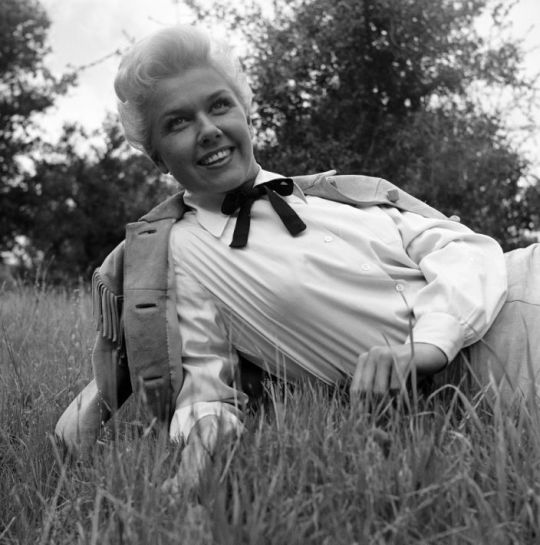
Doris Day
Date: May 13
Cause of death: Pneumonia
Age: 97
The legendary actress and singer first found fame as pop singer ("Sentimental Journey” went straight to No. 1 in 1945) but exploded to stardom on the big screen in films including Pillow Talk, Calamity Jane and The Man Who Knew Too Much. The one-time Academy Award nominee was paired with all of Hollywood hottest leading men, including Clark Gable (Teacher's Pet), Cary Grant (That Touch of Mink) and — most notably — Rock Hudson (Pillow Talk, Lover Come Back and Send Me No Flowers). Her freckle-faced, wholesome look led to her being crowned the top box office star of the early 1960s. Day’s attempts at marriage were less unsuccessful with one of her four husbands embezzling her fortune and leaving her broke. She climbed out with her successful The Doris Day Show, which she appeared on for five years until 1973. At the end of its run, she largely retired to focus on her animal activism, establishing the Doris Day Animal Foundation, briefly returning to host the talk show Doris Day's Best Friends in the ‘80s.
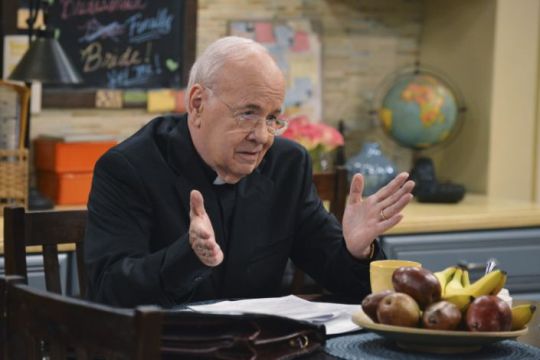
Tim Conway
Date: May 14
Cause of death: Water on the brain
Age: 85
The comedic actor brought the laughs on The Carol Burnett Show, for which he won four Primetime Emmys. His LOL characters on the sketch show included the Oldest Man, who was painfully slow — and hysterically funny. He went on to headline his own short-lived variety series, and made several movies with fellow comedian Don Knotts. Conway later won Emmys for guest appearances on the sitcom Coach and 30 Rock. He also voiced the character Barnacle Boy on SpongeBob SquarePants. Conway was diagnosed with normal pressure hydrocephalus in 2018 and had brain surgery, but died from complications of that condition.

Valerie Harper
Date: Aug. 30
Cause of death: Leptomeningeal carcinomatosis
Age: 80
The Broadway dancer turned TV star was best known for playing Rhoda, sidekick extraordinaire, on The Mary Tyler Moore Show before getting her own spinoff, cementing her as a ‘70s icon. She went on to starred in ‘80s sitcom Valerie, before a salary dispute led to her firing (which she later sued over and won). Harper, who beat lung cancer in 2009, went public with her fatal cancer diagnosis, leptomeningeal carcinomatosis, a condition in which cancer cells spread into the fluid-filled membrane surrounding the brain, in 2013 after being told she had three months to live. The walking miracle went on to live six more years — and kept working, from a Dancing With the Stars run to a sweet Mary Tyler Moore Show reunion on Hot in Cleveland.
1 note
·
View note
Text
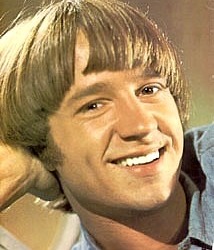

Monkees Co-founder Peter Tork Dead at 77
Peter Tork, co-founder and bassist for the Monkees, has died, his bandmates said on Facebook.
“Our beloved Peter passed away peacefully today at the age of 77,” the band wrote.
“His talent, charm and humor were undeniable and he had the rare honor of bringing joy and music to multiple generations. Our thoughts and prayers are with his family, friends and fans around the world.”
No cause of death was reported, though Tork, who celebrated his birthday earlier this month and hadn’t been touring with Michael Nesmith and Micky Dolenz, was diagnosed with a rare form of cancer more than a decade ago.
“There are no words right now,” Dolenz tweeted. “Heartbroken over the loss of my Monkee brother, Peter Tork.”
Though the band was assembled for a television show and was barred from playing on its initial releases, Tork was a multi-instrumentalist who was credited with writing “The Monkees” closing theme among other numbers.
“Although Micky and (the late) Davy (Jones) were the face of the Monkees, we all knew that Peter Tork was one hell of a musician,” songwriter Andy Kim tweeted. “Talented and brave. On to the light.”
Another songwriter, Carole King, tweeted simply: “RIP, Peter Tork.” And Brian Wilson said he was saddened by the news.
“I thought the Monkees were great and Peter will be missed,” Wilson tweeted. “Love and mercy to Peter’s family, friends and fans.”
Outside the Monkees, Tork collaborated with musicians such as George Harrison and Lowell George.
Renowned session bassist Leland Sklar used a Facebook post to remember Tork as “a really nice man and a part of our collective musical community.”
His television community remembered Tork, too, including Maureen McCormick (aka Marcia Brady), who said she was “heartbroken” by the loss of the man she called “sweet Peter.”
“His music has brought such joy into this world and will live on forever,” she tweeted.
While he hadn’t been playing live with the band, Tork appeared on the Monkees’ most-recent releases, 2016’s Good Times!, and 2018’s Christmas Party.
2/21/19
#peter tork#the monkees#davy jones#michael nesmith#micky dolenz#lowell george#little feat#george harrison#the beatles#carole king#andy kim#brian wilson#the beach boys#maureen mccormick#marcia brady#the brady bunch#leland sklar
3 notes
·
View notes
Video
Peter Tork performing “I Remember Christmas” (written by Nick Thorkelson) live in 1997. This song appears on A Beachwood Christmas (2003).
#Peter Tork#Tork videos#Tork quotes#90s Tork#Tork performances#1990s#1997#<3#<333#perennial favorite <3#A Beachwood Christmas#celebrating Peter Tork multi-instrumentalist#love that voice <3#can you queue it
32 notes
·
View notes
Photo



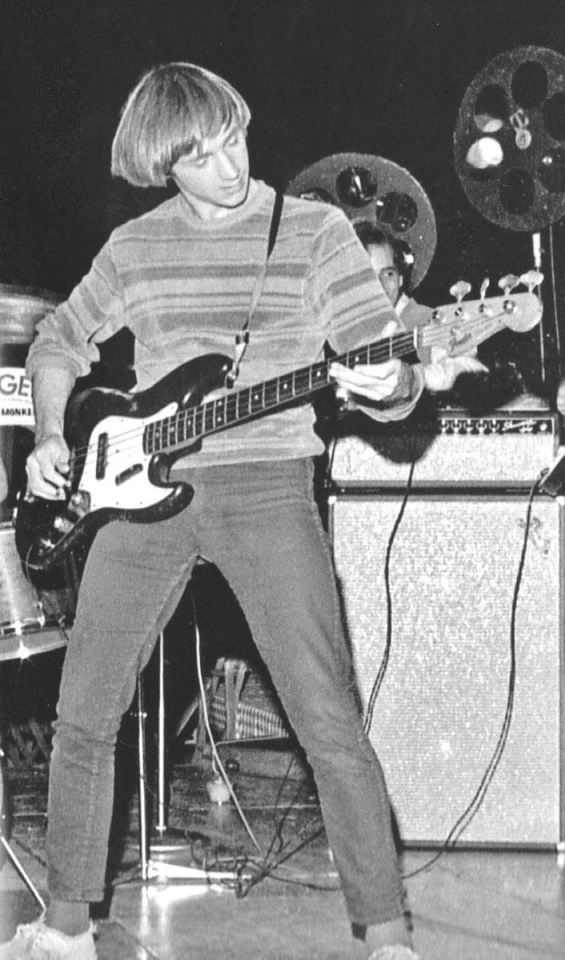
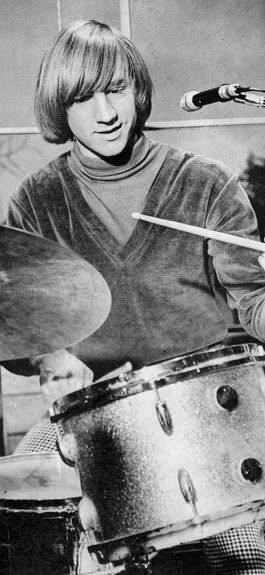





A look at Peter Tork, multi-instrumentalist:
“[Peter’s] really a genius, a prolific musician — he plays about seven instruments.” - Micky Dolenz, Record Mirror, February 11, 1967
"A friend of the family, Tom Glazer, a folk singer, is the one who started it all for me. He gave me my ukulele. I had been taking piano lessons but when I got the uke, I found I could go plunk, plunk, and it was a sound I really dug. My mother wanted me to keep studying the piano, but I couldn’t make that plunk-plunk sound on it even after practicing. Knowing the piano helped a lot, though. I played other instruments too, like the French horn. I played that as a senior in high school in Connecticut and in a university band." - Peter Tork, Seventeen, August 1967
"[As a performer in the early to mid-'60s, Peter] was utterly solo. And he was, he was fantastic. He was so good. It was wonderful." - James Lee Stanley, Tales of the Road Warriors, March 2019 (x)
Q: “Is it true that Micky Dolenz didn’t want to play the drums? He had never touched a drumstick before in his life?”
Peter Tork: “I don’t know about that, and, and it certainly isn’t true that he didn’t want to, he just didn’t know how to. I taught him his first drum lick. (imitates lick) You know, like that. ‘Okay, Micky, you hit it here, and you let it up with your foot, you close your foot, and you hit it again.’ (laughs)” - GOLD 104.5, 1999
Q: “Your first instrument was piano. So, were you comfortable when asked to play bass?”
Peter Tork: “Yes, piano came first at age nine, and I think by age 13 came guitar. In the early 1960s, what you did as a guitar player was play folk music. One of the ways you played it was to perform a thing called Travis Picking.
A guy named Merle Travis pretty much created that alternating thumb with syncopated finger picking on top, which meant you had to know the location of your bass notes. Boom, boom, boom, boom, boom bom, boom bom, boom bom, boom – that kind of thing you knew if you were playing guitar.
As it happens, the bass guitar is the bottom four strings of an acoustic guitar dropped an octave. My fingers pretty much fell into place picking up a guitar, and it was essentially the easiest transition in the world for me.
I hardly even noticed I was picking up a different instrument. So yeah, it’s always been pretty interesting and easy. I’ve always enjoyed playing bass.”
Q: “You were actually the first Monkee to appear musically on the group’s self-titled debut album, released in October 1966. How did that happen?”
PT: “There was a guitar section at that point – five guitar players. And I was like fourth out of the five guitars. I didn’t have a big contribution by any means. It was just actually Mike being nice to me.
He was in charge of his songs. There were four tracks produced by Michael on the first two albums, and I played guitar on three – ‘Papa Gene’s Blues,’ ‘Sweet Young Thing,’ and ‘Mary, Mary.’” - Pop Culture Examiner, November 1, 2011
Q: “Peter, you play various instruments. Do you prefer to play keyboards to banjo?”
PT: “Depends. I think that primarily, the thing about the banjo is that it plays one kind of music only. The piano is of course much more widely — if I had, if I could have a keyboard but no banjo or the other way around, I would of course keep the keyboard, just because you can play rock and roll and folk and melodies and improvise. It’s the instrument I’m most familiar with, it’s the one I trained on, and harmonically, it’s the one that falls most readily under my hands. And I think that would be, that would be it. The banjo is of course wonderful in its own way and you can do things on the banjo that no other instrument is capable of. I’d like to, I’d like to go on having what I’ve got, which is essentially both and then some, of course, guitar and French horn and harmonica and bass and all the others that I play on or play at. But for one instrument only, of course the keyboards.” - Headquarters radio, September 1989 (x)
"You know who was good? Peter Tork was an amazing multi-instrumentalist. I had no idea!" - Roger Bechirian (producer, Pool It!), Tape Op, July/August 2012 (x)
"I guess I’m still just a young hippie-folkie-rocker at heart, learning to play the blues.” - Peter Tork, Los Angeles Times, June 22, 2013 (x)
"I enjoy playing Johann Sebastian Bach [on piano] for a hobby, just to take my mind into different places." - Peter Tork, Medium, August 2017
And, to select some video footage to accompany this post, here's Peter... in 33 ⅓ Revolutions Per Monkee; live in Chicago in August 1988; live in 1997; Peter and Shoe Suede Blues (and early show); and playing the organ at Detroit's Fox Theatre.
#Peter Tork#Tork quotes#60s Tork#10s Tork#The Monkees#Monkees#Michael Nesmith#Micky Dolenz#Davy Jones#long read#<3#<333#Peter deserved better#celebrating Peter Tork multi-instrumentalist#1950s#1960s#1970s#1980s#1990s#2000s#2010s#Tork banjo#1966#1967#2010#2016#Seventeen Magazine#Headquarters Radio#Los Angeles Times#Record Mirror
43 notes
·
View notes
Text
Stephen Stills – Full Concert – 03/23/79 – Capitol Theatre (OFFICIAL)
[youtube https://www.youtube.com/watch?v=_LlppqoLZis]
Stephen Stills (Dallas, 3 gennaio 1945) è un chitarrista e cantautore statunitense.
È celebre per il suo lavoro nei gruppi Buffalo Springfield e Crosby, Stills, Nash and Young (inizialmente noti come “Crosby, Stills and Nash”; Young si unì alla band a partire dal secondo album).
Stills nacque il 3 gennaio 1945 a Dallas nel Texas. Il padre di Stills era un membro delle Forze Armate e la famiglia si trasferì diverse volte. Stills iniziò già da bambino ad interessarsi al blues e al folk. Durante un periodo passato in Costa Rica e nella Panama Canal Zone (dove completò le scuole superiori) conobbe anche la musica latino-americana.
Nei primi anni sessanta, Stills decise di intraprendere la carriera di musicista e abbandonò la University of Florida. Fu membro di diverse band di scarso successo, tra le quali ricordiamo i Continentals, in cui suonava anche Don Felder (poi chitarrista degli Eagles). Alla fine approdò a un gruppo corale composto da nove elementi, gli Au Go Go Singers, in cui incontrò Richie Furay. Il gruppo incise un album e intraprese un tour del Canada, durante il quale Stills e Furay conobbero il chitarrista Neil Young. Poco tempo dopo, gli Au Go Go Singers si sciolsero.
http://it.wikipedia.org/wiki/Stephen_Stills
Stephen Arthur Stills (January 3, 1945) is an American musician and multi-instrumentalist best known for his work with Buffalo Springfield and Crosby, Stills & Nash (and Young). He performed on a professional level in several other bands as well as maintaining a solo career at the same time.
Stills was ranked #28 in Rolling Stone Magazine‘s 2003 list of “The 100 Greatest Guitarists of All Time”[1] and #47 in the 2011 list.[2] Stills became the first person to be inducted twice on the same night into the Rock and Roll Hall of Fame for his work with CSN and Buffalo Springfield.
Stills was raised in a military family. Moving around as a child, he developed an interest in blues and folk music. He was also influenced by Latin music after spending his youth in Gainesville and Tampa, Florida, Louisiana, Costa Rica, Panama Canal Zone and El Salvador, where he graduated from high school, and is an avid sailor. He also attended Admiral Farragut Academy in St. Petersburg, Florida and Saint Leo College Preparatory School in Saint Leo, Florida.[3]
Stills dropped out of University of Florida to pursue a music career in the early 1960s. He played in a series of bands including The Continentals, which featured futureEagles guitarist Don Felder. Stills could also be heard singing solo at Gerde’s Folk City, a well-known coffee house in Greenwich Village. Stills eventually ended up in a nine-member vocal harmony group, the house act at the famous Cafe Au Go Go in NYC, called the Au Go Go Singers, which included future Buffalo Springfield bandmateRichie Furay. This group did some touring in the Catskills and in the South, released one album in 1964, then broke up in 1965. Afterwards, Stills, along with four other former members of the Au Go Go Singers formed The Company, a folk-rock group. The Company embarked on a six-week tour of Canada where Stills met a young guitarist named Neil Young. On the VH1 CSNY Legends special, Stills said that Young was doing what he always wanted to do, “play folk music in a rock band.” The Company broke up in New York within four months; Stills did session work and went to various auditions. In 1966 he convinced a reluctant Richie Furay, then living in Massachusetts, to move with him to California.
Stills made an unsuccessful attempt to become one of The Monkees. He was turned down, not due to any lack of ability, but because of a conflict with his existing music publishing contract. So instead, he recommended his friend, multi-instrumentalist Peter Tork
http://en.wikipedia.org/wiki/Stephen_Stills
from WordPress https://ift.tt/2Yimj96
via IFTTT
0 notes
Text
Stephen Stills – Full Concert – 03/23/79 – Capitol Theatre (OFFICIAL)
[youtube https://www.youtube.com/watch?v=_LlppqoLZis]
Stephen Stills (Dallas, 3 gennaio 1945) è un chitarrista e cantautore statunitense.
È celebre per il suo lavoro nei gruppi Buffalo Springfield e Crosby, Stills, Nash and Young (inizialmente noti come “Crosby, Stills and Nash”; Young si unì alla band a partire dal secondo album).
Stills nacque il 3 gennaio 1945 a Dallas nel Texas. Il padre di Stills era un membro delle Forze Armate e la famiglia si trasferì diverse volte. Stills iniziò già da bambino ad interessarsi al blues e al folk. Durante un periodo passato in Costa Rica e nella Panama Canal Zone (dove completò le scuole superiori) conobbe anche la musica latino-americana.
Nei primi anni sessanta, Stills decise di intraprendere la carriera di musicista e abbandonò la University of Florida. Fu membro di diverse band di scarso successo, tra le quali ricordiamo i Continentals, in cui suonava anche Don Felder (poi chitarrista degli Eagles). Alla fine approdò a un gruppo corale composto da nove elementi, gli Au Go Go Singers, in cui incontrò Richie Furay. Il gruppo incise un album e intraprese un tour del Canada, durante il quale Stills e Furay conobbero il chitarrista Neil Young. Poco tempo dopo, gli Au Go Go Singers si sciolsero.
http://it.wikipedia.org/wiki/Stephen_Stills
Stephen Arthur Stills (January 3, 1945) is an American musician and multi-instrumentalist best known for his work with Buffalo Springfield and Crosby, Stills & Nash (and Young). He performed on a professional level in several other bands as well as maintaining a solo career at the same time.
Stills was ranked #28 in Rolling Stone Magazine‘s 2003 list of “The 100 Greatest Guitarists of All Time”[1] and #47 in the 2011 list.[2] Stills became the first person to be inducted twice on the same night into the Rock and Roll Hall of Fame for his work with CSN and Buffalo Springfield.
Stills was raised in a military family. Moving around as a child, he developed an interest in blues and folk music. He was also influenced by Latin music after spending his youth in Gainesville and Tampa, Florida, Louisiana, Costa Rica, Panama Canal Zone and El Salvador, where he graduated from high school, and is an avid sailor. He also attended Admiral Farragut Academy in St. Petersburg, Florida and Saint Leo College Preparatory School in Saint Leo, Florida.[3]
Stills dropped out of University of Florida to pursue a music career in the early 1960s. He played in a series of bands including The Continentals, which featured futureEagles guitarist Don Felder. Stills could also be heard singing solo at Gerde’s Folk City, a well-known coffee house in Greenwich Village. Stills eventually ended up in a nine-member vocal harmony group, the house act at the famous Cafe Au Go Go in NYC, called the Au Go Go Singers, which included future Buffalo Springfield bandmateRichie Furay. This group did some touring in the Catskills and in the South, released one album in 1964, then broke up in 1965. Afterwards, Stills, along with four other former members of the Au Go Go Singers formed The Company, a folk-rock group. The Company embarked on a six-week tour of Canada where Stills met a young guitarist named Neil Young. On the VH1 CSNY Legends special, Stills said that Young was doing what he always wanted to do, “play folk music in a rock band.” The Company broke up in New York within four months; Stills did session work and went to various auditions. In 1966 he convinced a reluctant Richie Furay, then living in Massachusetts, to move with him to California.
Stills made an unsuccessful attempt to become one of The Monkees. He was turned down, not due to any lack of ability, but because of a conflict with his existing music publishing contract. So instead, he recommended his friend, multi-instrumentalist Peter Tork
http://en.wikipedia.org/wiki/Stephen_Stills
from WordPress https://ift.tt/2RgOF02
via IFTTT
0 notes
Text
Stephen Stills – Full Concert – 03/23/79 – Capitol Theatre (OFFICIAL)
[youtube https://www.youtube.com/watch?v=_LlppqoLZis]
Stephen Stills (Dallas, 3 gennaio 1945) è un chitarrista e cantautore statunitense.
È celebre per il suo lavoro nei gruppi Buffalo Springfield e Crosby, Stills, Nash and Young (inizialmente noti come “Crosby, Stills and Nash”; Young si unì alla band a partire dal secondo album).
Stills nacque il 3 gennaio 1945 a Dallas nel Texas. Il padre di Stills era un membro delle Forze Armate e la famiglia si trasferì diverse volte. Stills iniziò già da bambino ad interessarsi al blues e al folk. Durante un periodo passato in Costa Rica e nella Panama Canal Zone (dove completò le scuole superiori) conobbe anche la musica latino-americana.
Nei primi anni sessanta, Stills decise di intraprendere la carriera di musicista e abbandonò la University of Florida. Fu membro di diverse band di scarso successo, tra le quali ricordiamo i Continentals, in cui suonava anche Don Felder (poi chitarrista degli Eagles). Alla fine approdò a un gruppo corale composto da nove elementi, gli Au Go Go Singers, in cui incontrò Richie Furay. Il gruppo incise un album e intraprese un tour del Canada, durante il quale Stills e Furay conobbero il chitarrista Neil Young. Poco tempo dopo, gli Au Go Go Singers si sciolsero.
http://it.wikipedia.org/wiki/Stephen_Stills
Stephen Arthur Stills (January 3, 1945) is an American musician and multi-instrumentalist best known for his work with Buffalo Springfield and Crosby, Stills & Nash (and Young). He performed on a professional level in several other bands as well as maintaining a solo career at the same time.
Stills was ranked #28 in Rolling Stone Magazine‘s 2003 list of “The 100 Greatest Guitarists of All Time”[1] and #47 in the 2011 list.[2] Stills became the first person to be inducted twice on the same night into the Rock and Roll Hall of Fame for his work with CSN and Buffalo Springfield.
Stills was raised in a military family. Moving around as a child, he developed an interest in blues and folk music. He was also influenced by Latin music after spending his youth in Gainesville and Tampa, Florida, Louisiana, Costa Rica, Panama Canal Zone and El Salvador, where he graduated from high school, and is an avid sailor. He also attended Admiral Farragut Academy in St. Petersburg, Florida and Saint Leo College Preparatory School in Saint Leo, Florida.[3]
Stills dropped out of University of Florida to pursue a music career in the early 1960s. He played in a series of bands including The Continentals, which featured futureEagles guitarist Don Felder. Stills could also be heard singing solo at Gerde’s Folk City, a well-known coffee house in Greenwich Village. Stills eventually ended up in a nine-member vocal harmony group, the house act at the famous Cafe Au Go Go in NYC, called the Au Go Go Singers, which included future Buffalo Springfield bandmateRichie Furay. This group did some touring in the Catskills and in the South, released one album in 1964, then broke up in 1965. Afterwards, Stills, along with four other former members of the Au Go Go Singers formed The Company, a folk-rock group. The Company embarked on a six-week tour of Canada where Stills met a young guitarist named Neil Young. On the VH1 CSNY Legends special, Stills said that Young was doing what he always wanted to do, “play folk music in a rock band.” The Company broke up in New York within four months; Stills did session work and went to various auditions. In 1966 he convinced a reluctant Richie Furay, then living in Massachusetts, to move with him to California.
Stills made an unsuccessful attempt to become one of The Monkees. He was turned down, not due to any lack of ability, but because of a conflict with his existing music publishing contract. So instead, he recommended his friend, multi-instrumentalist Peter Tork
http://en.wikipedia.org/wiki/Stephen_Stills
from WordPress https://ift.tt/2rxzzJm
via IFTTT
0 notes